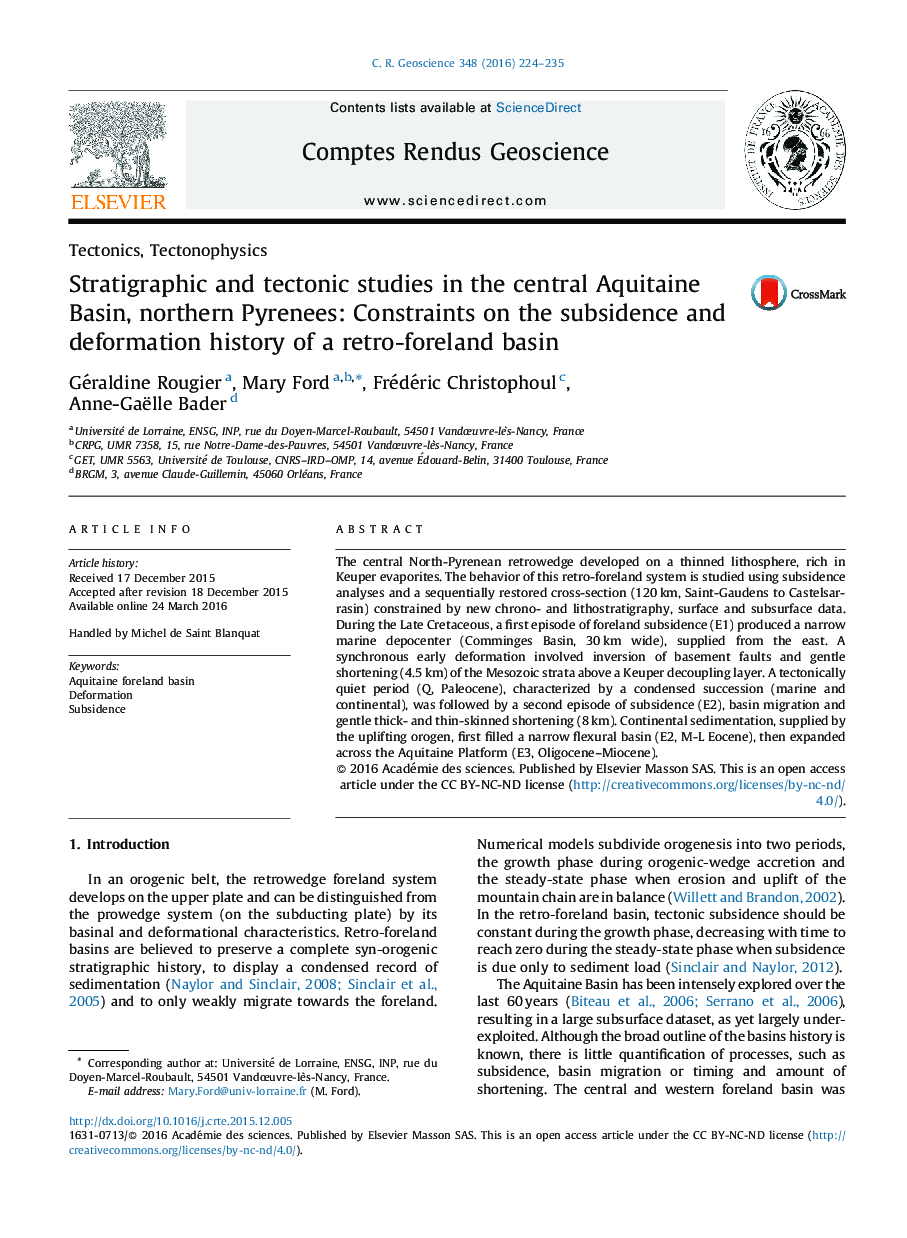| Article ID | Journal | Published Year | Pages | File Type |
|---|---|---|---|---|
| 6347787 | Comptes Rendus Geoscience | 2016 | 12 Pages |
The central North-Pyrenean retrowedge developed on a thinned lithosphere, rich in Keuper evaporites. The behavior of this retro-foreland system is studied using subsidence analyses and a sequentially restored cross-section (120Â km, Saint-Gaudens to Castelsarrasin) constrained by new chrono- and lithostratigraphy, surface and subsurface data. During the Late Cretaceous, a first episode of foreland subsidence (E1) produced a narrow marine depocenter (Comminges Basin, 30Â km wide), supplied from the east. A synchronous early deformation involved inversion of basement faults and gentle shortening (4.5Â km) of the Mesozoic strata above a Keuper decoupling layer. A tectonically quiet period (Q, Paleocene), characterized by a condensed succession (marine and continental), was followed by a second episode of subsidence (E2), basin migration and gentle thick- and thin-skinned shortening (8Â km). Continental sedimentation, supplied by the uplifting orogen, first filled a narrow flexural basin (E2, M-L Eocene), then expanded across the Aquitaine Platform (E3, Oligocene-Miocene).
